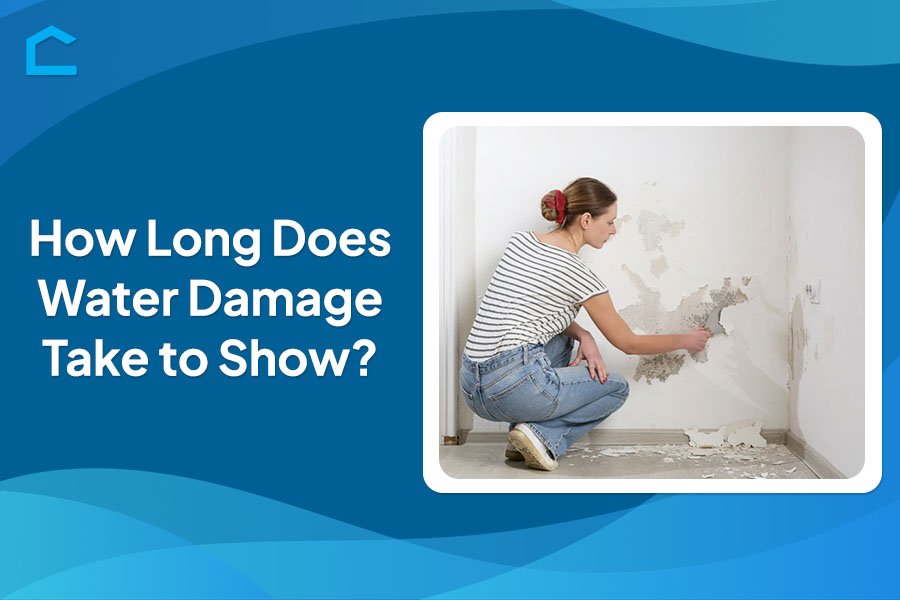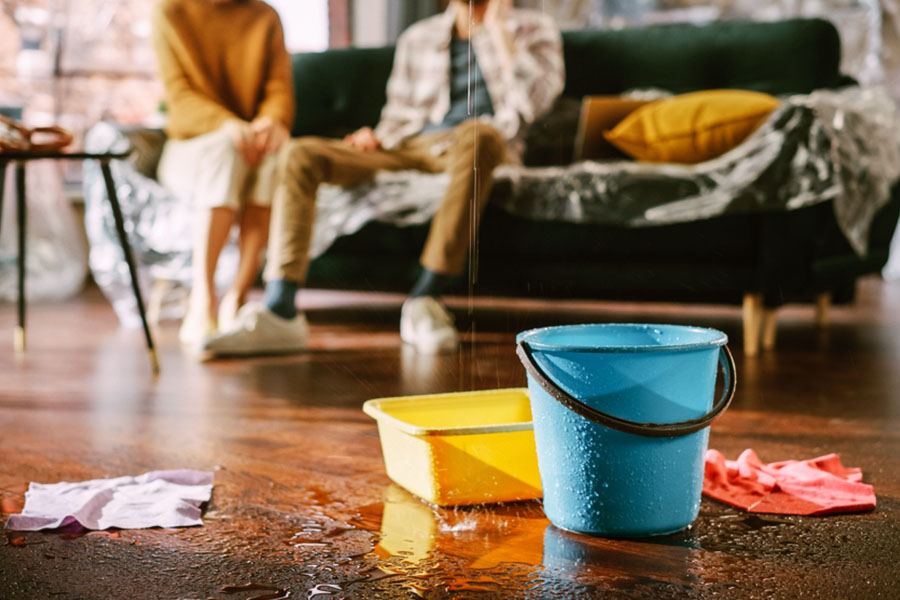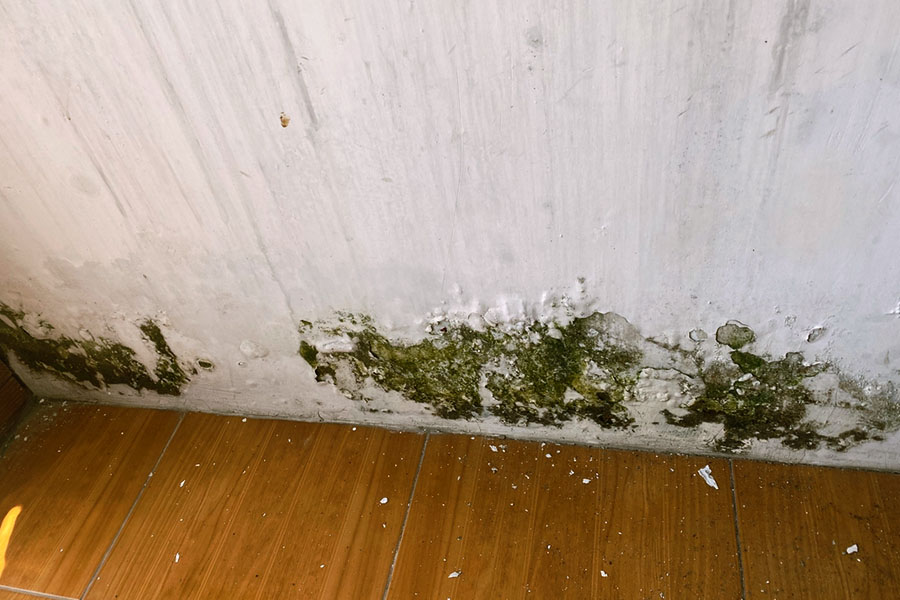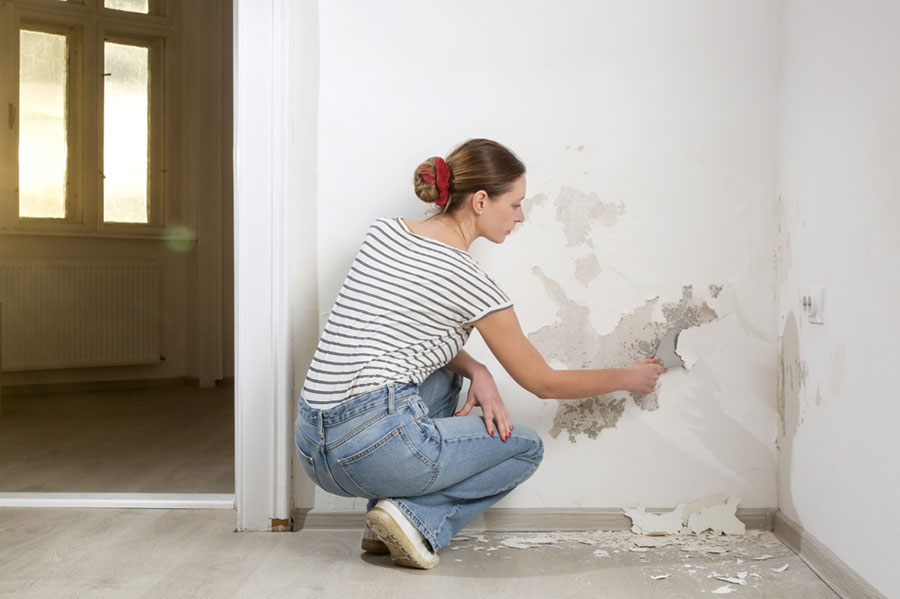How Long Does Water Damage Take to Show?

Water damage can occur in homes and buildings from various sources, such as flooding, leaks, or excessive humidity. While some water damage is immediately visible, other times, the signs are not apparent right away. So, how long does water damage take to show?
The timeline for water damage to manifest can vary depending on several factors. In this guide, we will explore the stages and durations involved in the emergence of water damage.
We will also look at the factors that influence how quickly water damage becomes visible. Let’s start!

Source: shutterstock.com / Photo Contributor: Gorodenkoff
How Long Does Water Damage Take to Show?
Water damage can become apparent within hours to days, depending on various factors such as the amount of water, the type of materials affected, and environmental conditions like humidity levels. Initially, subtle signs like discoloration, dampness, or odors may indicate the presence of water damage.
Over time, these symptoms can escalate to more noticeable issues such as swelling of walls or ceilings, peeling paint or wallpaper, and mold or mildew growth. It’s crucial to address water damage promptly to prevent further deterioration and potential health risks associated with mold and bacteria growth.
Immediate signs of water damage
So, how long does it take for water damage to show in your home? You may immediately notice visible water accumulation on floors, walls, or ceilings.
Other signs, such as damp areas on surfaces, water stains, and musty odors, may also suggest that water has entered your property. These immediate signs indicate that action should be taken as soon as possible to address the water source and begin the restoration process.
However, addressing delays in water management can prevent further damage. You must pay attention to these early warning signs, such as water-logged or saturated carpets, furniture, or personal belongings.
If you notice any buckling or warping of wood floors or surfaces, this is another clear indicator of water damage that requires prompt attention. Any unexplained moisture or condensation on windows or walls should be investigated as a potential sign of an underlying water issue.
Short-term signs of water damage
Signs of moisture intrusion
You might see paint or wallpaper peeling or bubbling within a few days to weeks after water exposure. Wood furniture, floors, or trim may start swelling or warping due to moisture absorption. Mold growth can often be visible within 24 to 48 hours, and you may experience increased humidity and condensation indoors.
These short-term signs indicate that the water damage has already begun to affect your property. Ignoring these signs can allow the damage to progress further, potentially leading to more extensive and costly repairs. So, we advise prompt action to help prevent long-term issues.

Source: shutterstock.com / Photo Contributor: Anita Handayani
Indicators of advancing damage
You may notice water stains or discoloration on walls or ceilings, along with a musty or earthy odor. In some cases, you might even hear crackling or popping sounds from wooden surfaces as they absorb moisture, causing them to warp or buckle.
Additionally, drywall or plaster may start to crumble or show signs of deterioration, indicating that water has penetrated deep into the building materials. If any of these short-term signs appear, it’s crucial to act quickly to mitigate further damage.
Long-term signs of water damage
If you don’t address water damage promptly, it can lead to severe and long-lasting issues over months or even years. Structural components like beams and foundations may weaken, jeopardizing the integrity of your building.
Furthermore, persistent mold and mildew problems can develop, possibly posing health hazards, especially for those with respiratory conditions or weakened immune systems. Over time, building materials and insulation can deteriorate, leading to energy inefficiency and costly repairs or replacements.
Water exposure can also compromise or short-circuit electrical systems, creating safety risks and potential fire hazards. Moreover, long-term water damage can result in foul odors permeating your property, making it an unpleasant living environment.
Factors Influencing the Visibility of Water Damage
The visibility of water damage is influenced by several factors, including the source and amount of water, the affected materials, and environmental conditions. Large water intrusions, like flooding, are immediately noticeable. In contrast, smaller leaks might go unnoticed until significant damage has occurred.
Porous materials such as drywall and wood readily show signs of water damage, including swelling, stains, and mold growth. On the other hand, non-porous surfaces may only exhibit surface wetness.
Additionally, warmer temperatures and high humidity can accelerate visible damage, while poor ventilation traps moisture, preventing drying and exacerbating visible issues. The duration of water exposure and the presence of recurring moisture problems also affect how quickly visible signs appear.
Importance of prompt action
Even minor water exposure can lead to serious damage if left unchecked. Carpets, upholstery, insulation, drywall, and wood products are particularly vulnerable and may need to be replaced if heavily saturated. To minimize the visibility and extent of water damage, you must ensure proper airflow, lighting, and prompt water mitigation.
Addressing moisture problems quickly can prevent the development of mold, rot, and material deterioration. As mentioned, delaying action can result in more extensive and costly repairs, as well as potential health risks from mold growth.
How to Detect Hidden Water Damage
You must utilize moisture meters and infrared cameras to detect hidden water damage effectively. These tools help you pinpoint elevated moisture levels and temperature differences that indicate potential issues.
Start by inspecting common trouble spots like basements, attics, and areas behind appliances. Look for telltale signs such as dampness, water stains, and mold growth. Also, keep an eye (and nose) out for persistent condensation and musty odors, which can indicate hidden water damage.
Moreover, regular monitoring is key. Make it a habit to conduct inspections, check humidity levels, and use moisture sensors to catch problems early. If you do spot issues, don’t hesitate to seek professional help.
Professionals have specialized equipment and expertise to thoroughly assess and address hidden water damage before it escalates into more serious and costly repairs. It’s better to tackle the problem head-on than to deal with the consequences later.

Source: shutterstock.com / Photo Contributor: triocean
Conclusion
Understanding how long does water damage take to show is crucial for homeowners and property managers alike. Whether it stems from a sudden flood or a hidden leak, water damage can manifest within hours to days, depending on various factors such as moisture levels, affected materials, and environmental conditions.
Early signs like discoloration, dampness, or musty odors should prompt immediate action to prevent structural deterioration and potential health risks from mold growth. By staying vigilant and addressing moisture issues promptly with the help of professionals and advanced detection tools like moisture meters and infrared cameras, you can mitigate the impact of water damage before it leads to extensive and costly repairs.
Remember, proactive management and regular inspections are key to safeguarding your property against hidden water damage. Be mindful!
